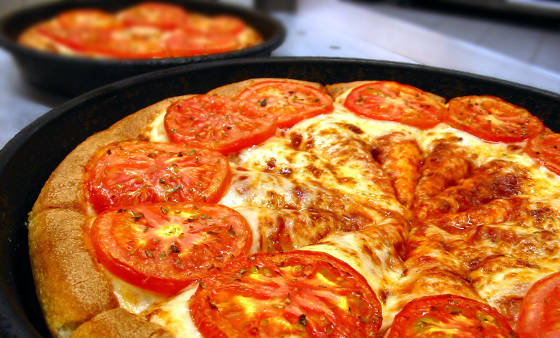Americans eat over three billion pizzas a year. Pizza is omnipresent in our society: you can get it at fast food chains, in the freezer section of your grocery store, and high-end restaurants. There's New York style, Chicago deep dish style, flatbread pizza, and now you can grow your own pizza garden. After all, gardens aren't only for your roses and other flowers!

By growing your own pizza garden, you can control your caloric intake and reap the benefit of fresh, nutritious (and potentially organic) produce. Of course, you're not limited to putting these homegrown ingredients only on pizza. Recipes like this Cheesy Pizza Pasta Bake can benefit from fresh veggies, too!
Planter Options
In just a few square feet, you can grow tomatoes for your sauce, as well as herbs, onions, peppers, and other veggies for your toppings. If you do not have a yard with garden space, a pizza garden can be grown in garden planters placed on a patio or balcony. Plants in clay pots require more water than those planted in plastic or wood pots and, of course, all containers require good drainage.
If you have a yard or large patio, a four-by-four foot area is ideal for this project. The variety and number of plants needed will depend on your personal preferences. Start with a few Roma tomato plants. Romas are excellent both for making pizza sauce and as a topping. The remainder of the garden can be planted with vegetables like onions, green, red, and banana peppers as well as herbs like basil, oregano, thyme, parsley, and rosemary.
Theme Your Garden
If you have kids, theme gardens like this present an excellent opportunity to talk to them about healthy eating and encouraging them to try new things. You can also get creative with your garden layout by planting it in the shape of a pizza - anything to encourage kids to try and enjoy vegetables, right?
Soil Quality
Whatever shape and location you choose for your garden, start by making sure that you have quality soil with plenty of nutrients. You can start your plants from seeds, which is less expensive, but more labor intensive, or purchase seedlings at a garden store. Be sure to follow the instructions that come with each plant regarding proper watering and sun exposure. Lastly, check the plants daily for any signs of disease or pests. A quick tip: ladybugs and lacewings are not pests, these two bugs eat aphids and mites and are good for your garden.
While most commercially available pizza is junk food, when produced carefully at home it can be a very healthy dietary choice. The tomato sauce is a rich in lycopene which is an antioxidant known to fight cancer. Veggies are all rich in A, B6, and C vitamins, as well as antioxidants. A good low-fat cheese is rich in calcium and a whole grain crust provides necessary fiber.
- Editor's Note: Cecelia Gray Lloyd lives in Florida and loves working out at the beach almost as much as he loves writing. He is a freelance writer and editor, and occasionally takes on personal training clients.
